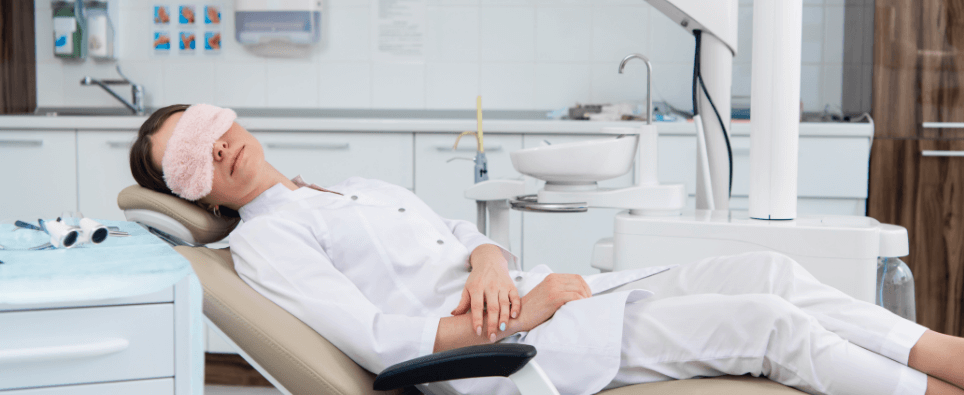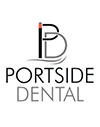



Sleep Dentistry - Newport: Enhancing Your Dental Experience
Going to the dentist can be an anxiety-inducing experience for many people. However,
advancements in dental technology have paved the way for innovative solutions to alleviate
patient fears and discomfort. Sleep dentistry offers a comprehensive approach to enhancing the
dental experience. In this detailed guide, we will explore what sleep dentistry is and how this
dental procedure has changed the way people think about dentistry.
What is Sleep Dentistry:
Sleep dentistry involves the use of anaesthesia to induce a relaxed, sleep-like state during
dental procedures. This technique is particularly beneficial for patients with dental anxiety,
sensitive gag reflexes, extensive treatment needs, or those undergoing complex dental
procedures. By administering anaesthesia, patients can experience a comfortable and pain-free
dental visit.
The Role of a Specialist Medical Anaesthetist:
In sleep dentistry, the administration of anaesthesia is performed by a specialist medical
anaesthetist. These professionals are highly trained and experienced in providing safe and
effective anaesthetic care. They work closely with the dental team to ensure the patient’s
comfort and safety throughout the procedure. The presence of a specialist medical anaesthetist
adds an extra layer of expertise and reassurance for patients undergoing sleep dentistry.
Personalized Treatment Planning:
Sleep dentistry begins with a comprehensive evaluation of the patient’s dental health and
treatment needs. The dental team, including the specialist medical anaesthetist, carefully
assesses the patient’s medical history, dental condition, and any underlying health concerns to
develop a personalized treatment plan. This plan takes into account the level of anaesthesia
required, the duration of the procedure, and any specific patient requirements.
Anaesthesia Options in Sleep Dentistry:
Different levels of anaesthesia can be utilized in sleep dentistry, depending on the patient’s
needs and the complexity of the dental procedure. The options include:
a. General Anaesthesia: In this approach, the patient is completely unconscious and unaware
during the procedure. General anaesthesia is typically recommended for complex surgeries or
for patients with high levels of dental anxiety.
b. Deep Sedation: Deep sedation induces a sleep-like state where the patient is partially
conscious but remains deeply relaxed. This level of anaesthesia is suitable for more extensive
procedures or patients with moderate dental anxiety.
c. Moderate Sedation: Also known as conscious sedation, this level of anaesthesia allows the
patient to remain awake but relaxed throughout the procedure. It is ideal for patients with mild to
moderate dental anxiety.
Benefits of Sleep Dentistry:
Sleep dentistry offers numerous benefits for patients, including:
a. Anxiety Reduction: Patients with dental phobia or anxiety can undergo dental treatment
without experiencing overwhelming fear or stress.
b. Pain-Free Experience: The use of anaesthesia ensures a pain-free and comfortable dental
visit, allowing patients to receive necessary treatments.
c. Enhanced Efficiency: Sleep dentistry enables the dental team to perform complex
procedures more efficiently and effectively, as patients are in a relaxed state and experience
reduced muscle reflexes.
d. Treatment of Extensive Dental Needs: Patients requiring multiple or lengthy procedures
can have their dental needs addressed in a single visit, minimizing the need for multiple
appointments.
e. Improved Oral Health: Sleep dentistry encourages patients to maintain regular dental visits,
leading to improved oral health and overall well-being.
Safety Considerations:
Patient safety is of paramount importance in sleep dentistry. The presence of a specialist
medical anaesthetist ensures rigorous monitoring of vital signs, including heart rate, blood
pressure, and oxygen levels, throughout the procedure. The dental team follows stringent
protocols and maintains a sterile environment to minimize any risks associated with the use of
anaesthesia.
Aftercare and Recovery:
Following sleep dentistry, patients are monitored during the recovery phase to ensure their
comfort and safety. The dental team provides detailed post-operative instructions, including
dietary guidelines, pain management, and oral hygiene practices. Patients may experience
some temporary side effects, such as drowsiness or mild soreness, which subside within a short
period.
Choosing a Dentist in Newport:
While choosing a dentist in Newport, it is essential to consider the qualifications and experience
of the dental team and the specialist medical anaesthetist. Look for a dental practice that has a
strong track record in sleep dentistry, positive patient reviews, and a commitment to patient care
and safety. One such reliable dental clinic is Portside Dental in Newport.
Conclusion:
Sleep dentistry has revolutionized the dental experience, offering patients a comfortable and
anxiety-free solution for their oral health needs. With the expertise of a specialist medical
anaesthetist, dental procedures can be performed efficiently and effectively, ensuring optimal
patient comfort and safety. If you struggle with dental anxiety or require complex dental
treatment, sleep dentistry may be the key to enhancing your dental experience and achieving a
healthy, confident smile. Sleep dentistry paves the way for a positive and enhanced dental
experience in Newport.

